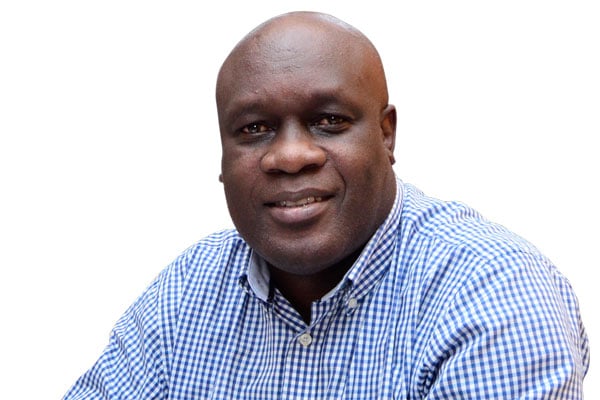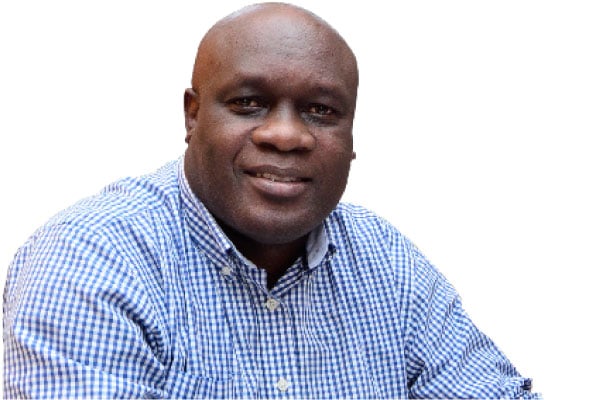Prime
Readers’ take on trust in media and similar photos

Author: Odoobo C. Bichachi is the Nation Media Group (NMG)-Uganda public editor. PHOTO/FILE.
What you need to know:
- It is, therefore, likely that Kabaka’s photo was taken by same photographer on his press team and distributed through CBS to other media.
This week’s column is wholly dedicated to your feedback and questions. We start off with Kato Abel (@KatoAbel3) who tagged me (images and text) on X (Twitter) on February 15, saying: “We can hardly differentiate between Daily Monitor and New Vision because of similar front page photos!”
He was right to wonder how for two consecutive days, both cover photos of Daily Monitor and New Vision were exactly the same. February 14, it was a photo of Kabaka Ronald Mutebi at Kasubi tombs in same posture, same setting, same angle, and same persons. Only cropping differed. February 15, it was Vice President Jessica Alupo being smeared with ash in the Ash Wednesday ritual that begins Christian’s Lent season. Again, same posture, same setting, same angle, and same persons. Again, only cropping differed; a factor of space.
Daily Monitor chief sub-editor said “it is pure coincidence, on merit. Once in a while, even headlines may appear similar.” That’s true. And a good picture will be seen and picked by any editor. It is common for news media worldwide to carry same photo of an event like war in Gaza, Papal visit, etc.
NTV’s head of news raised another possibility: “[It is] not uncommon where there are space constraints and a good picture can only be taken from a specific area or where arrangements dictate that all journalists keep to one side.” But can two different photographers get everything exactly the same? Quite unlikely!
Photographers’ bylines in the two newspapers may explain whether it is the same or just similar photo. Kabaka’s photo in Daily Monitor credited to CBS (Central Broadcasting Services radio?) as the source. New Vision did not credit the source. The Ash Wednesday photo was credited to Abubaker Lubowa in Daily Monitor and to Simon Peter Tumwine in New Vision.
It is therefore likely that Kabaka’s photo was taken by same photographer on his press team and distributed through CBS to other media. As for the Ash Wednesday photo, there are many possibilities, like we see happen with wire photos from Reuters, AFP, Xinhua, or even our own Presidential Press Unit (PPU).
******
On bad journalists vs good journalism
Lemeriga Fadhil (Arua): Your article, “Why bad journalists may not do good journalism” Daily Monitor, February 9) stated, inter alia, that social media has disrupted the way stories are told, how they are consumed, who tells stories, and who to believe or not to believe.
Let mainstream media appreciate the fact that they are thin on ground and have benefitted a lot from social media. In any case if there are errors in reporting by citizen journalists, let the professionals dig further in order to put certain facts right.
With ever increasing importance of internet, social media won’t get stopped. Rather, its intensity will increase.
And, Daily Monitor should stop its biases, especially against Democratic Party. They report nothing from its press conferences but are quick to jump on any negative story about the party.
******
Nsobya Paddy: Thank you for your article, “Why bad journalists may not do good journalism” (Daily Monitor, February 2).
Indeed the fate of good journalism in our country today is under question. Journalism (like Pentecostal churches) is the only profession in Uganda that is not regulated. Even witch-doctors, charcoal burners, fishermen, herbalists, hawkers, butcher-men wake up and turn into reporters and editors. Under such circumstances, professional standards that uphold trust can be compromised – intentionally or unintentionally.
To professional journalists and “patriots” of the profession, this is so hurting! Watching and listening to many radio and television programmes paints one picture; that Ugandan media industry is really “third world”.
For newspapers, the language of some writers and editors is of political cadres, not journalists. I was once stunned to learn that some writers had been turned into RDCs! These were journalists whose writings and presentations I had always hated but had to bear with them thinking that they were only acting in the spirit of journalism. I was deceived!
I support the view that the consumer get to know about their service providers in the media, especially qualifications, experience, etc. This can help to save face and trust of the industry.
Send your feedback/complaints to
call/text on +256 776 500725.



